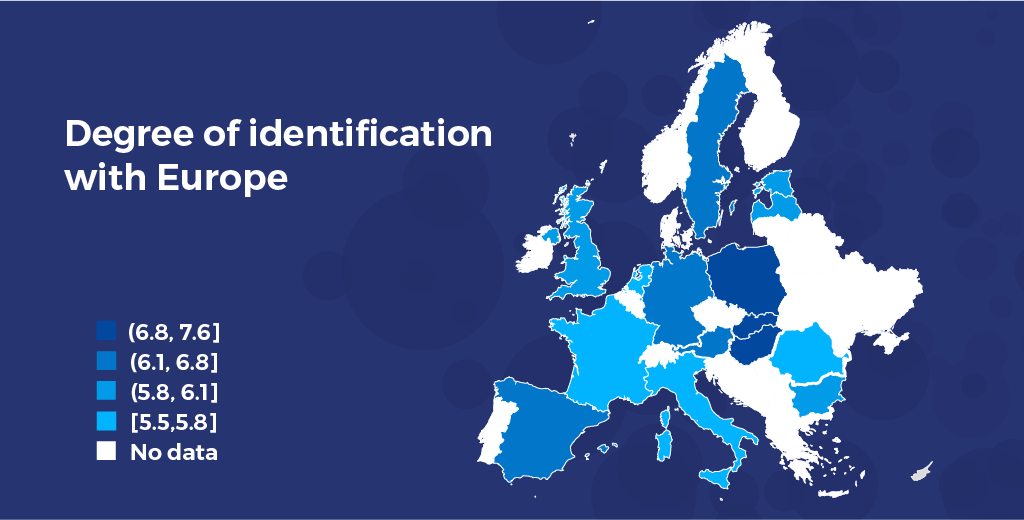What influences citizens’ perception and identification with the EU?
22/03/2018 | University of Barcelona | Research | WP2

What are the implications of the PERCEIVE Survey's results? Why do individuals identify with Europe? How EU policies influence this process? We combined the data and the literature from the first project's findings and attempted early answers to the main questions of the research. Read more and download the report on the determinants of citizens perception and identification with Europe curated by the University of Barcelona.
How and where the identification with the EU project takes place?
The main questions that PERCEIVE Project is trying to answer with its research are:
- Why do individuals identify with Europe?
- How can the identification with the European project be developed?
- Are EU policies amplifying citizens’ exposure to the idea of the EU?
- Are citizens aware of the aims and perceive the benefits of the Cohesion Policy?
Since the beginning of the project, we have gathered interesting results that are paving the way for a deeper understanding of what determines the answers to these questions. One of our latest outputs - deliverable 2.2 - combines several inputs from previous findings: the Survey curated by the University of Gothenburg, the literature discussed by the University of Bologna and Vienna University of Economics and Business, and the results of the research on urban and rural divide developed by the University of Portsmouth.
Main topics
A central assumption of this report is that Europeans experience the EU mainly in the national political arenas; however, Cohesion Policy, which is one of the major EU policies, is managed mostly by local authorities. Therefore, this policy should have a visible impact on the everyday life of citizens, by responding to specific regional needs.
PERCEIVE's research draws upon the social constructivist approach in the study of European identity, which argues that social processes and interaction with others influence the formation of our knowledge. In this sense, the legitimacy of the EU might depend on the perception of the existence of a European Identity, the determinants of which can be based on information or on experience. In the construction of the latter, Cohesion Policy should play a fundamental role.
Highlights of the results
The spatial analysis looked at the identification with Europe on four different levels: national, regional, urban and rural. The results show no clear geographical pattern: in the eastern and in some central countries there is a higher identification compared to the western countries. However, there is a difference between the two Mediterranean countries - Spain and Italy. Case-study regions show similar results: for example, the polish regions feel more European than the Essex.
Concerning cities and countryside, both for identification and appreciation for EU membership, there is no significant difference between urban and rural areas. Nevertheless, there is a greater divide between large cities and rural areas.
Do you want to read more? Download the Report here.
Do you want to read the full research paper? Go to the Public Deliverables' page.
Do you want us to keep you updated? Follow us on Facebook, Twitter, Linkedin and subscribe to our newsletter!
Project Updates
The Social Media Engagement Report (D.7.4) has been published!
by BAM! Strategie Culturali | 02/09/2019
Last month of PERCEIVE project!
by 01/08/2019
The project will end on 31 August, but we still have some insights and materials to share with you. Stay tuned!
Both Policy Briefs (D.7.5, D.7.6) are now online!
by University of Bologna | 01/07/2019




